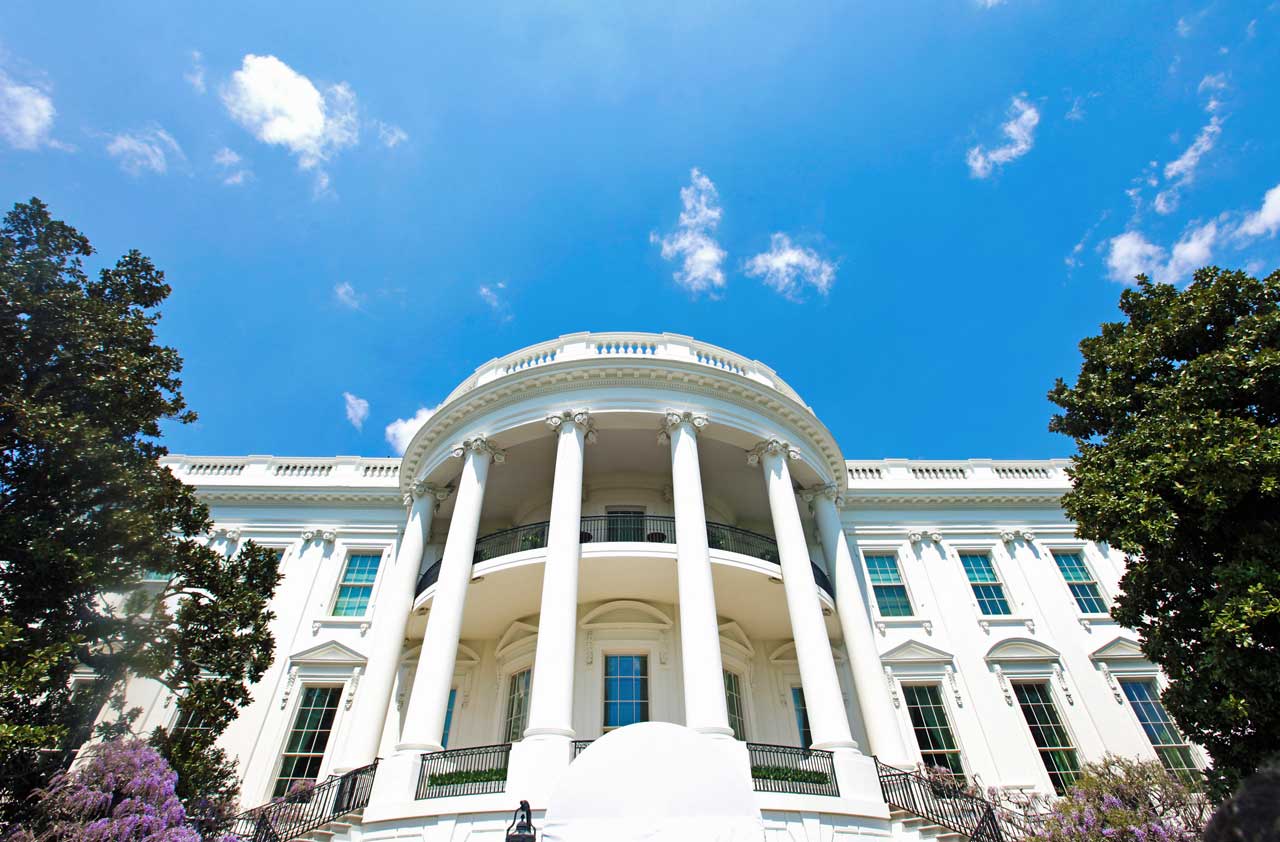Budget Myths Obscure Hard Choices
It’s time for voters to trade their blindfolds for green eyeshades and think more realistically about budget cutting.

A Washington Post poll published last weekend found that half of Americans believe we can balance the budget by eliminating government waste.
If only it were that easy.
The truth is that even if you adopt a very broad definition of waste (say one that includes the entire Education Department and the Environmental Protection Agency), getting rid of it would barely get you close to a balanced budget. In fact, eliminating all discretionary spending except for defense -- every penny that Congress and the White House control -- wouldn’t do it.
From just $107.88 $24.99 for Kiplinger Personal Finance
Become a smarter, better informed investor. Subscribe from just $107.88 $24.99, plus get up to 4 Special Issues

Sign up for Kiplinger’s Free Newsletters
Profit and prosper with the best of expert advice on investing, taxes, retirement, personal finance and more - straight to your e-mail.
Profit and prosper with the best of expert advice - straight to your e-mail.
But do it we must or we’re going to bankrupt the country. One of the great things about the Tea Party is that it pushed the issue of ballooning debt to the front of the political debate. One of the awful things about the Tea Party is that it offered no substantial program for drawing down that debt. In fact, its plan to first cut everybody’s taxes would only make the problem that much more intractable.
Not that the “establishment” parties are doing any better. They also rail against the deficit without showing any willingness to make the hard choices that are necessary. The House Republicans’ “Pledge to America” includes a vow of fiscal constraint, but the policies it offers don’t amount to any significant progress. Democrats, meanwhile, are doing their best to take Social Security and Medicare off the table, using scare tactics to hammer GOP candidates even though it’s obvious to anyone who looks at the numbers that entitlements must be reined in, and the sooner, the better.
While the empty rhetoric fills the airwaves, the bipartisan national debt commission is working on the problem in a more serious manner. Contrary to everyone’s expectations, the 18-member group now seems likely to get behind a serious set of recommendations. Of course, the panel’s report will go to Congress, and who knows what will happen then.
We don’t know very much about the panel’s deliberations, other than that they are looking at a comprehensive package -- one that will gore everyone’s ox at least a little -- because that’s the only way to get the job done.
But we can get a good idea of what’s in store by studying the recent plan offered by Bill Galston and Maya MacGuineas -- two people who truly take the debt seriously. The commission is sure to depart from Galston and MacGuineas on many specifics, but most of the principles are likely to follow a similar path. That’s why the duo’s plan is worth a good hard look.
Galston, of the Brookings Institution, and MacGuineas, president of the Committee for a Responsible Federal Budget, started by setting a goal of bringing the debt down to a more manageable 60% of GDP by 2020. That would require reducing annual deficits over the next decade by a total of $6.8 trillion. (Without any action, the debt would otherwise reach 90% of GDP by then.) Their guiding principles included sharing the pain, encouraging growth, protecting those in need and acknowledging demographic shifts.
Galston and MacGuineas offered lots of detailed proposals that would take effect gradually, beginning in 2012. Here are a few highlights:•Freeze domestic discretionary spending for three years and limit future increases to the rate of inflation. Cumulative savings by 2020: $60 billion.
•Reduce spending on big-ticket weapon systems and cover any war costs after 2015 with a war surtax. Savings: $80 billion.
•Rein in Social Security by increasing retirement ages and indexing them to longevity, tying future benefit hikes to the slower-growing chained CPI, using progressive indexing for higher earners, creating a minimum benefit for low-income earners and an old-age bonus to kick in at age 85, and making payroll taxes progressive. Savings: $75 billion.
•Limit the growth in health costs through tort reform, higher Medicare premiums and a gradual increase in the eligibility age for Medicare to 67. Savings: $110 billion.
•Index federal salaries to private sector wage growth, phase out farm subsidies and replace them with insurance against catastrophic loss. Savings: $75 billion.
•Reduce targeted tax breaks by 10% and limit their future growth, dividing the proceeds between lower tax rates and deficit reduction. Among the specific ideas is a plan to phase out the state and local tax deduction and to reduce the maximum mortgage interest deduction from $1 million to $500,000. Savings: $300 billion.
•Increase revenues by enacting a broad-based carbon tax and enacting revenue-neutral corporate tax reform to reduce rates while broadening the base for taxation. Savings: $100 billion.
No one is going to like all of these ideas, but this is a serious plan that shows how crucial it is to take action along a broad front so that no single group and no single program is hurt too badly. And remember this plan still leaves a deficit of 60% of GDP -- about $1.1 trillion in 2020. Imagine how much more would have to be cut to get to a balanced budget.
The message is crystal clear: Whatever plan Congress eventually adopts to bring the deficit under control will be very painful and will have to include tax increases as well as spending cuts in some very popular programs. The majority of Americans who think it’s as simple as eliminating government waste are in for a rude wakeup call.
Profit and prosper with the best of Kiplinger's advice on investing, taxes, retirement, personal finance and much more. Delivered daily. Enter your email in the box and click Sign Me Up.

-
 Retirees in These 7 States Could Pay Less Property Taxes Next Year
Retirees in These 7 States Could Pay Less Property Taxes Next YearState Taxes Retirement property tax bills could be up to 65% cheaper for some older adults in 2026. Do you qualify?
-
 Estate Tax Quiz: Can You Pass the Test on the 40% Federal Rate?
Estate Tax Quiz: Can You Pass the Test on the 40% Federal Rate?Quiz How well do you know the new 2026 IRS rules for wealth transfer and the specific tax brackets that affect your heirs? Let's find out!
-
 'The 'Mamdani Effect' in New York: Can the City Afford a Millionaire Tax?
'The 'Mamdani Effect' in New York: Can the City Afford a Millionaire Tax?State Tax Will higher income taxes drive the wealthy to flee New York in 2026?
-
 Kiplinger's 2020 Election Forecast
Kiplinger's 2020 Election ForecastPolitics For nearly a century, The Kiplinger Letter has forecasted the outcome of presidential elections to keep readers informed of what's coming and what it means for them. Here's our call for 2020.
-
 How the GOP Tax Bill May Affect Businesses
How the GOP Tax Bill May Affect BusinessesBusiness Costs & Regulation Corporations would enjoy a lower flat tax rate while individual owners of pass-throughs would also see a lower rate, but with more complex terms.
-
 The Long Slog in Congress After Comey
The Long Slog in Congress After ComeyPolitics Trump's firing of the FBI director ruffled congressional feathers, but not enough to spur an independent investigation into Russian meddling in the 2016 U.S. election.
-
 Trump’s Tax Reform Plan Faces Tough Challenges
Trump’s Tax Reform Plan Faces Tough ChallengesPolitics A one-page outline isn't enough to satisfy a Congress interested in the details — and protecting constituents.
-
 Trump's Agenda and Challenges
Trump's Agenda and ChallengesPolitics What lies ahead for the President-Elect.
-
 Clinton on Track to Win 2016 Presidential Election
Clinton on Track to Win 2016 Presidential ElectionPolitics Trump can win the White House, but faces an uphill climb.
-
 New Overtime Rules Will Hit Businesses This Year
New Overtime Rules Will Hit Businesses This YearBusiness Costs & Regulation A change in salary threshold will make more workers eligible for extra pay.
-
 Bumpy Road Ahead in 2016 Presidential Race
Bumpy Road Ahead in 2016 Presidential RacePolitics Trump will get a bounce after the Republican convention, but Clinton is poised to regain ground.